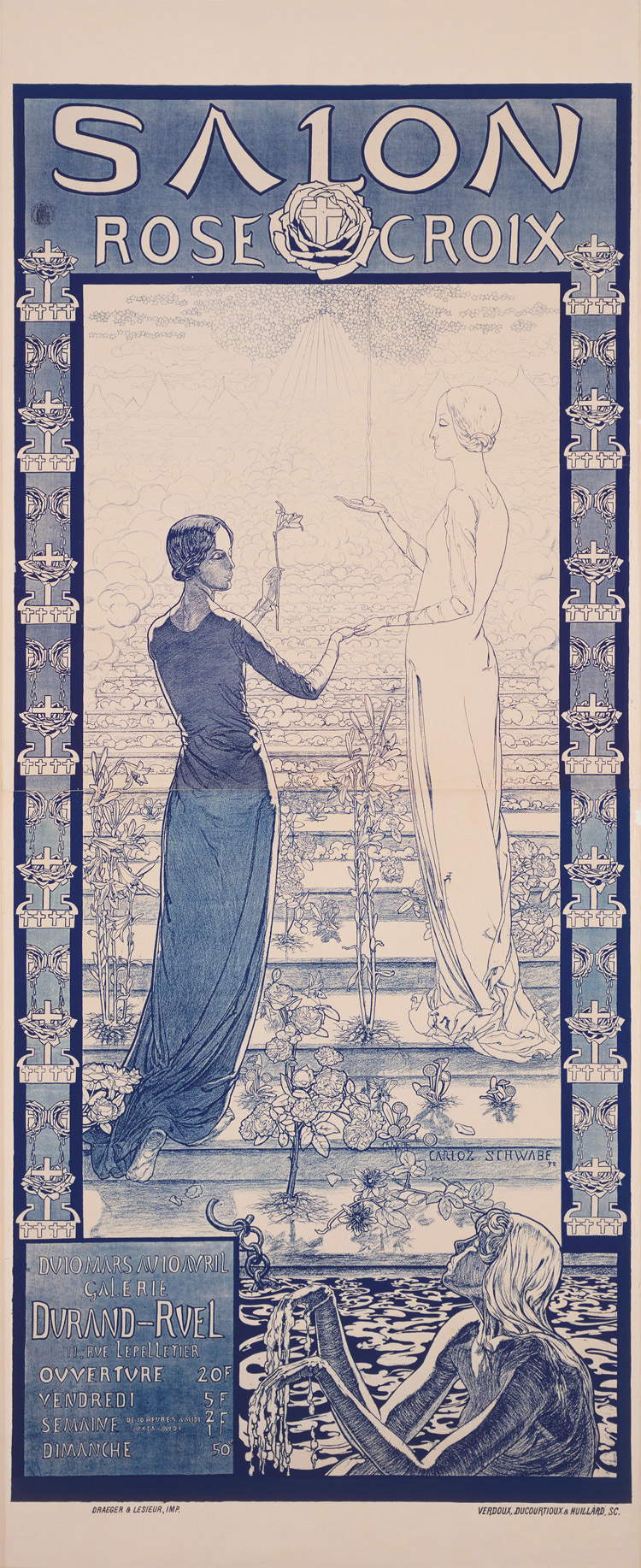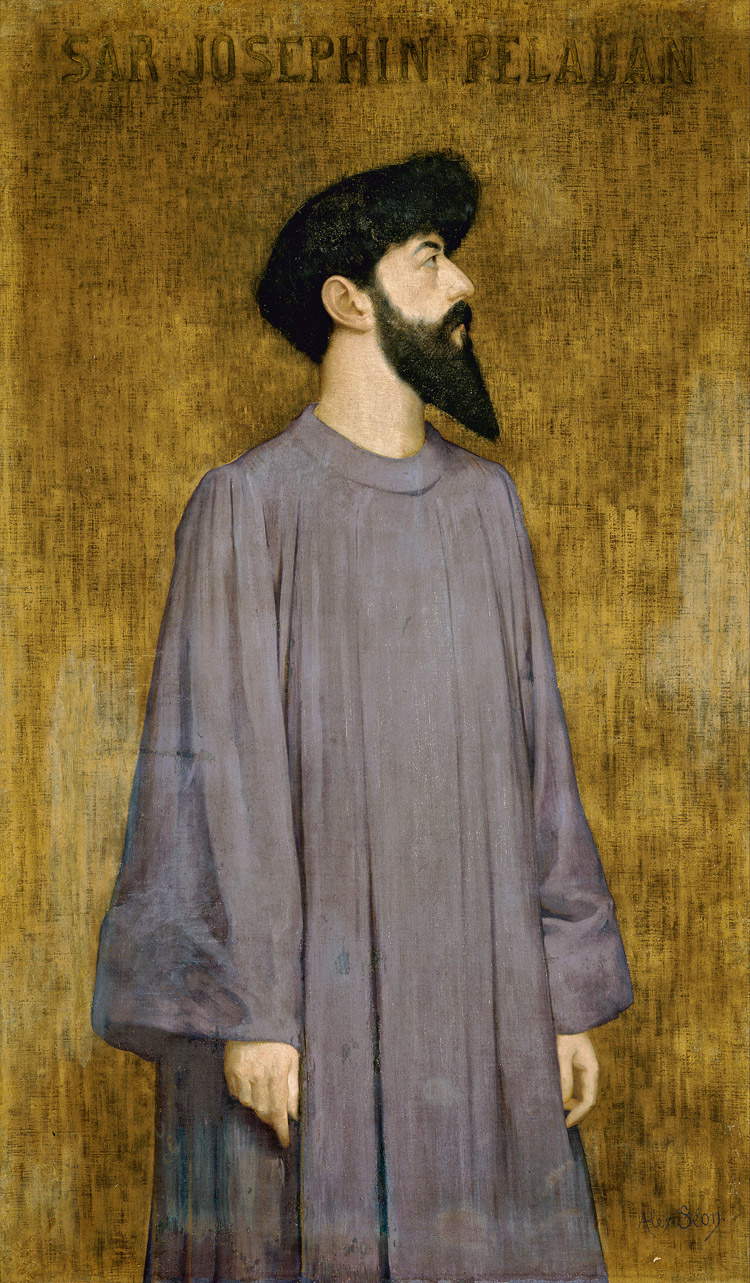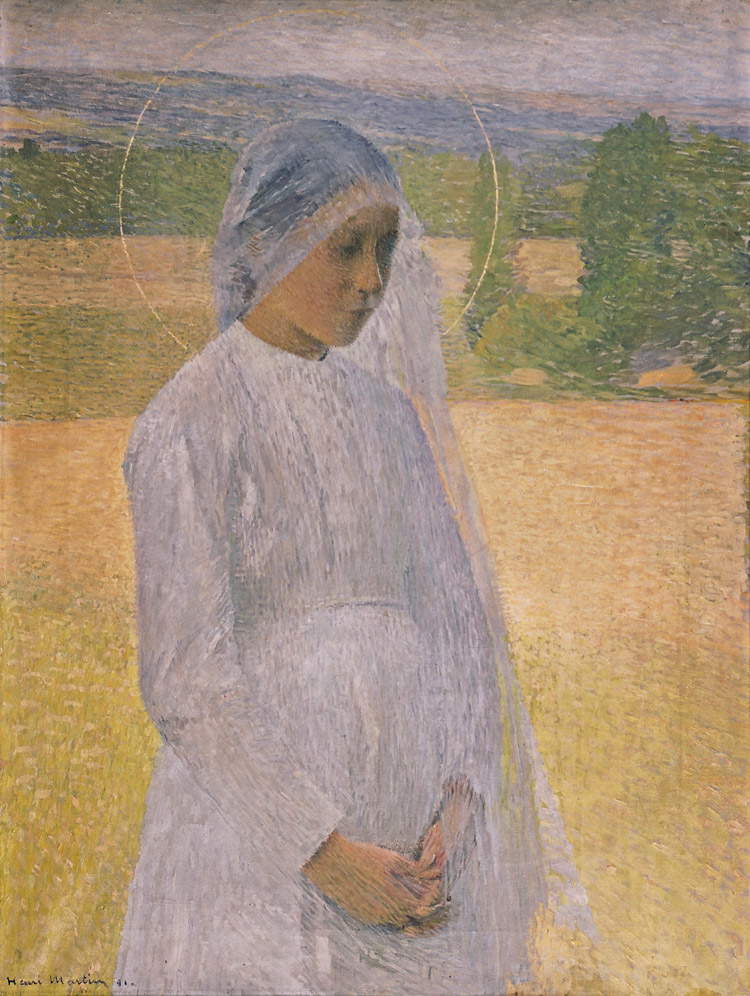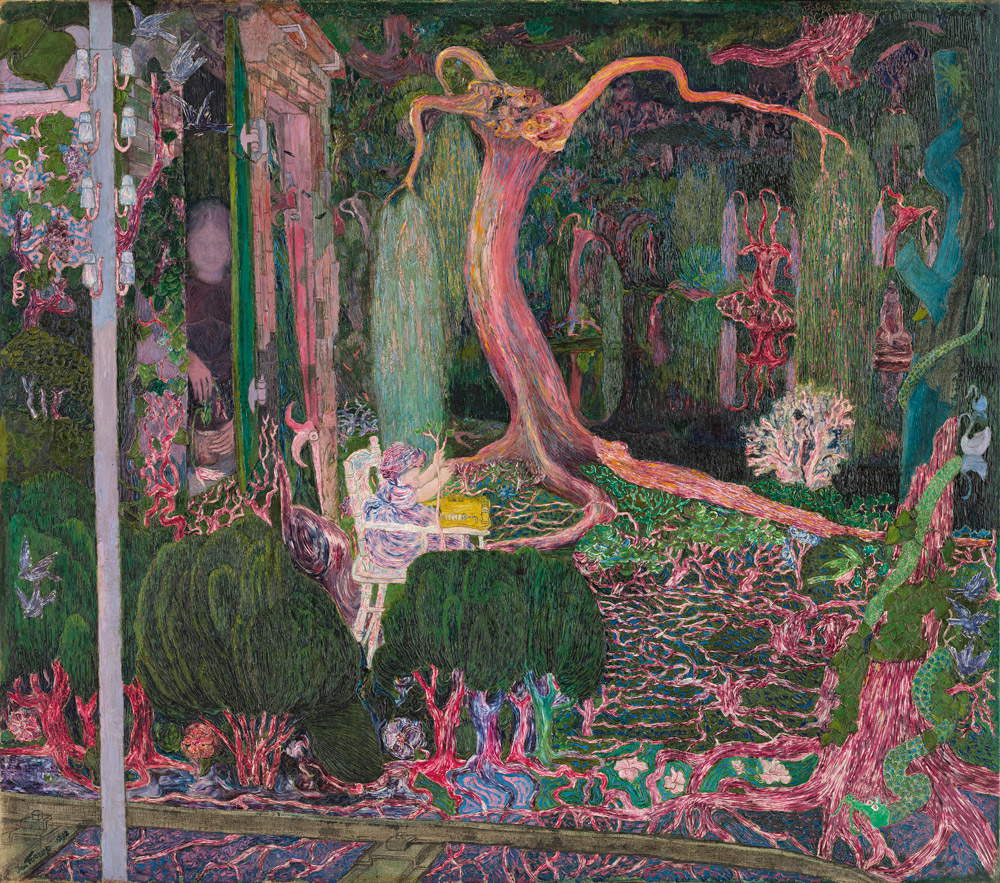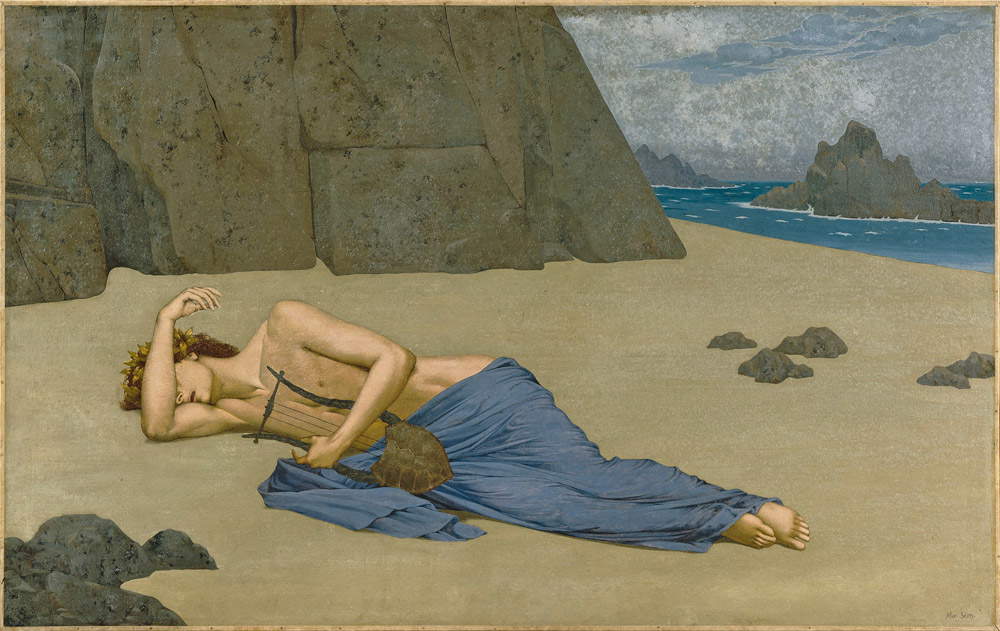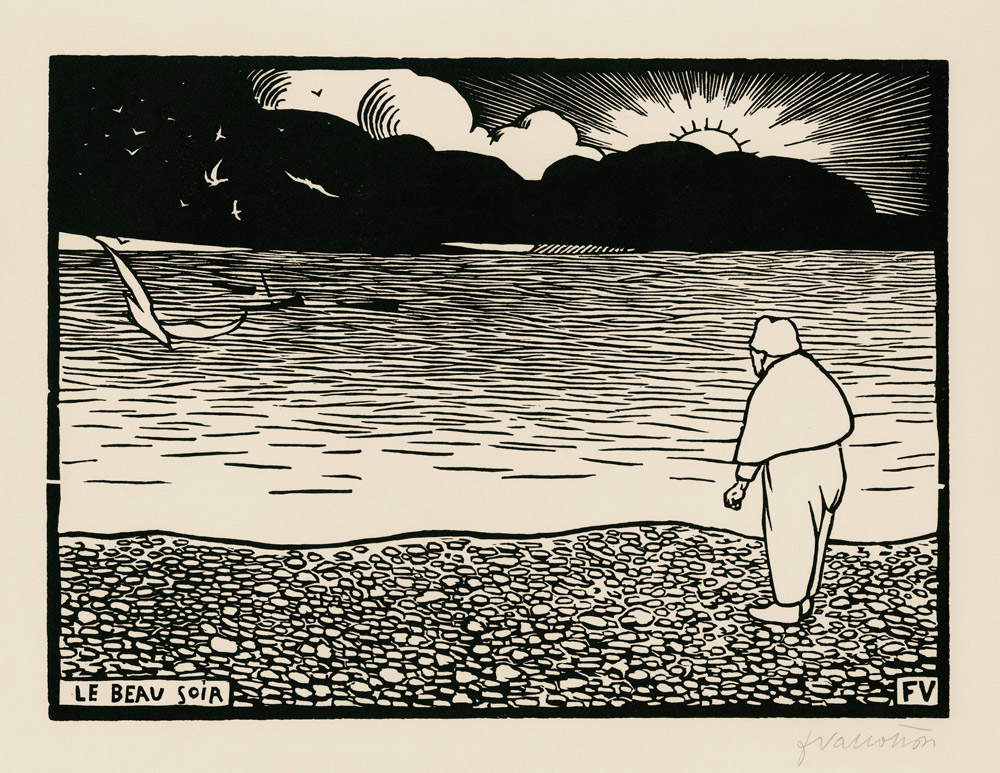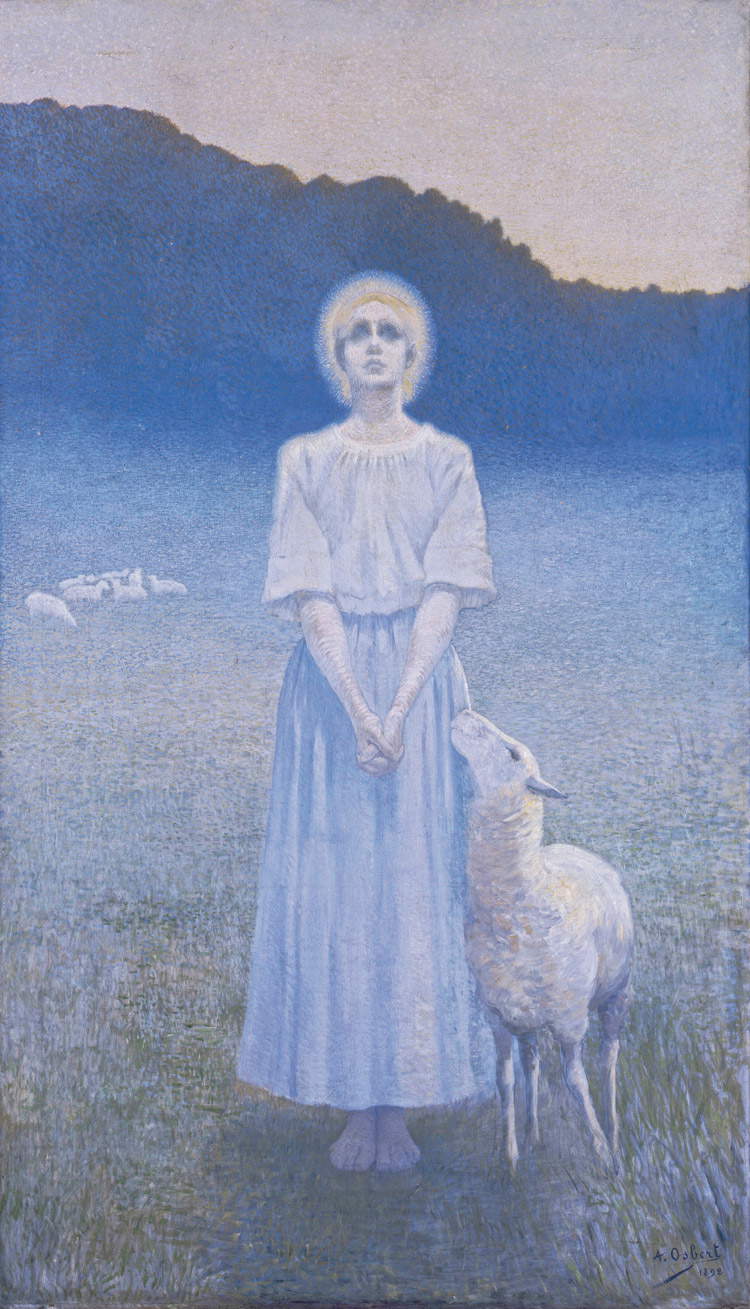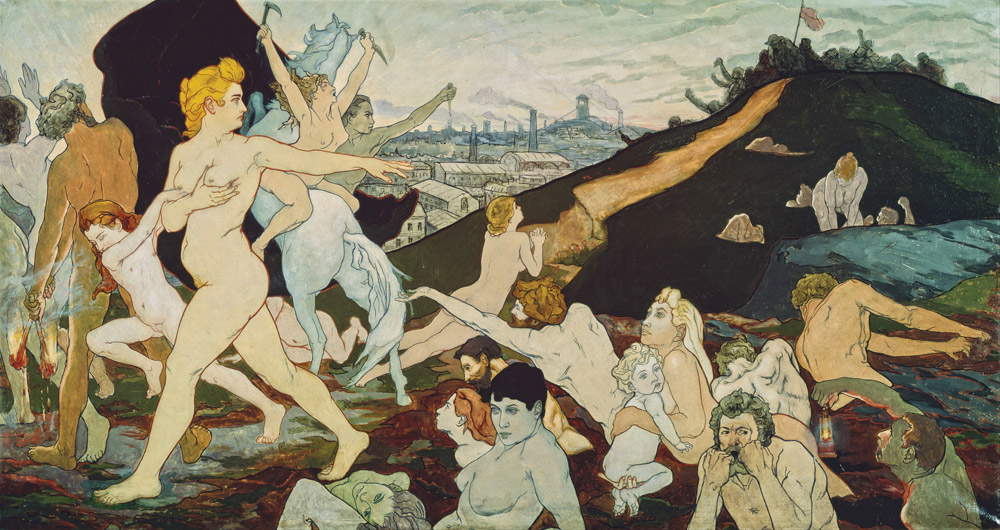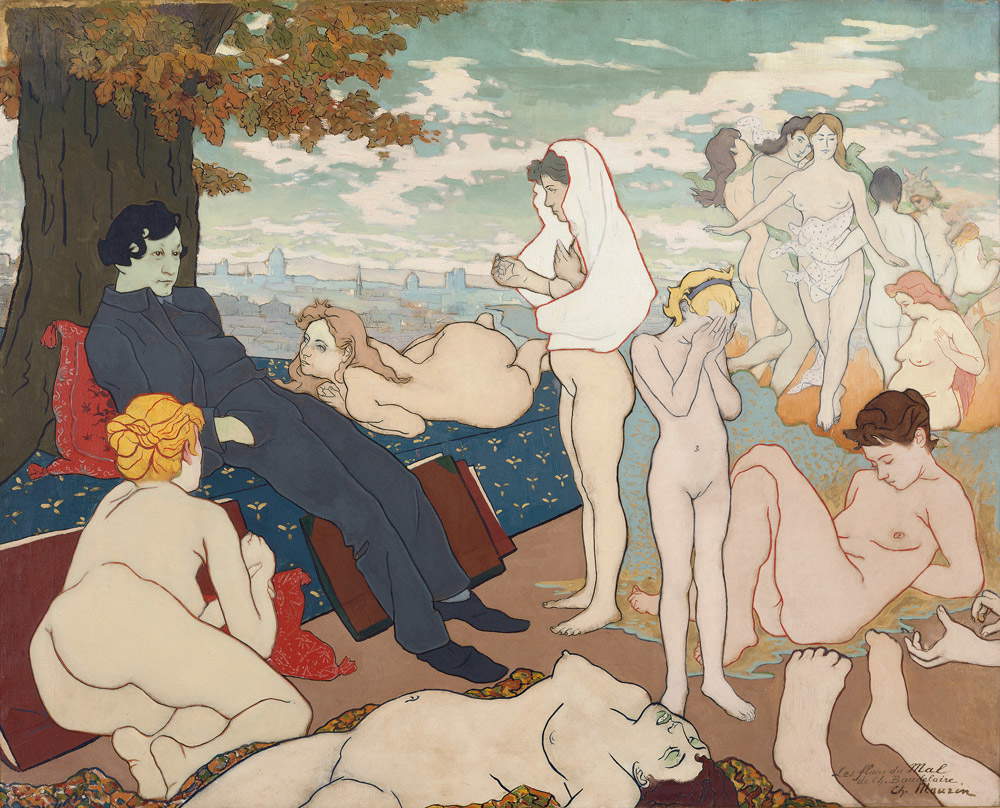by Redazione , published on 28/10/2017
Categories: Exhibitions
/ Disclaimer
An exhibition on the mystical symbolism of the Salon de la Rose+Croix comes to Venice's Peggy Guggenheim for the first time. A selection of works on display.
Running from October 28, 2017 to January 7, 2018 is the exhibition Mystic Symbolism. The Salon de la Rose+Croix in Paris 1892-1917, held at the Peggy Guggenheim Collection in Venice. This is the first exhibition ever dedicated to the art of the Salons de la Rose+Croix, a series of art and music exhibitions conceived by critic Joséphin Péladan (Lyon, 1858 - Neuilly-sur-Seine, 1918) in the 1890s in Paris and which were important for the development ofSymbolist art, with themes mostly related to mystery, mythology, and literature.
Thus, about forty works arrive in Venice that were exhibited in the various Salons held from 1892 to 1897 (the first was held at the Galerie Durand-Ruel, the same gallery that had played an important role in the establishment of Impressionist painting). The name, “Salon de la Rose+Croix,” was intended to pay homage to the Rose+Croix confraternity founded by Péladan himself: this was a kind of esoteric sect that practiced mystical rituals aimed at achieving truth and enlightenment. The paintings that were exhibited at the various Salons were thus of this tenor: dreams, visions, chimeras, images of femme fragile and femme fatale, strange mythological creatures. Artists from all over Europe came to the Salons, and the Venice exhibition, curated by Vivien Greene (Senior Curator of 19th and early 20th century art at the Solomon R. Guggenheim Museum in New York), exhibits the works of some of them: Félix Vallotton, Carlos Schwabe, Charles Maurin, Jean Delville, Georges Rouault, Antoine Bourdelle, Rogelio de Egusquiza, Charles Filiger, Fernand Khnopff, Alphonse Osbert, Armand Point, Alexandre Séon, and Jan Toorop. Paintings, works on paper and sculptures are on display.
"Mystic Symbolism. The Salon de la Rose+Croix in Paris 1892-1897,“ we read in the presentation, ”offers an opportunity to delve into the various ideas, sometimes opposed to each other, that underpinned Symbolism in the 1890s. Focusing on key works exhibited in each Salon, the exhibition identifies certain recurring themes, such as the role of Orpheus, the adulation of painting by early Italian Renaissance artists known as the Primitives, and the cult of personality that developed around figures such as Richard Wagner and Péladan himself. The exhibition does not lack the musical component, represented by works by Erik Satie and others, underscoring the key-role occupied by composers of the time and the past.“ And again, some reasons for interest: ”Exhibitions devoted to the Symbolist movement have, until now, focused on a specific geographical area or broader themes rather than on a specific event, such as precisely Péladan’s Salon de la Rose+Croix. The divergent ideologies of those who exhibited in the Salons, which ranged from conservative, Catholic politics to the most radical, anti-clerical anarchy, reveal how the different approaches were dialectically linked to the sacred and spiritual philosophies underlying Symbolist art. By analyzing the ways in which the Salons proposed such impulses, the exhibition aims to investigate Symbolist precepts related to modernism."
The exhibition can be visited daily (except Tuesdays, which are closed) from 10 a.m. to 6 p.m. The exhibition can be accessed with the museum ticket: full 15 euros, 13 euros the reduced over 65, FAI members, COOP members and holders of Alitalia flight boarding passes to or from Venice (up to a maximum of 7 days before the visit), 9 euros the reduced for under 26, school groups, UNESCO members, IAA, AIAP, ANISA, Amici Musei Venezia, people with mild disabilities slight without accompanying person, journalists, law enforcement, Fidelity Card holders Teatro Goldoni of Venice or Teatro Verdi of Padua, free for children up to 10 years old, differently abled with accompanying person, Advisory Board members, The International Patrons, Guggenheim Circle, Friends of the Collection, members of museums managed by the Solomon R. Foundation. Guggenheim with membership cards, employees of the Intrapresae Guggenheim Collection, ART PAAS members, AAMD, ICOM, ICOMOS, accredited journalists, students of the Venice Academy of Fine Arts and the Venice High School of Art, members of the Venice Tourist Guide Association, Chiavi d’Oro members, members of affiliated museums (the list is on the Peggy Guggenheim Collection website, where you can also find the exhibition info). Guided tours are held daily at 3:30 pm. Information and reservations: phone 041.2405.422 / 432, fax 041.520.6885, email shop@guggenheim-venice.it. Below are some of the works to be seen in the exhibition.
 |
| Carlos Schwabe, Poster for the first Salon de la Rose+Croix (1892; lithograph, 198 x 80.5 cm; New York, The Museum of Modern Art; Digital image © The Museum of Modern Art/Licensed by SCALA/Art Resource, New York) |
 |
| Alexandre Séon, Le Sâr Joséphin Péladan (1891; oil on canvas, 132.5 x 80 cm; Lyon, Musée des Beaux Arts) |
 |
| Pierre Amédée Marcel Béronneau, Orphée (1897; oil on canvas, 194 x 156 cm; Marseille, Musée des Beaux Arts) X.2014.437 |
 |
| Henri Martin, Jeune sainte (1891; oil on canvas, 65.4 x 49.3 cm; Brest, Musée des Beaux-Arts. Photo : © Musée des Beaux-Arts, Brest, France) |
 |
| Jan Toorop, De nieuwe Generatie (1892; 96.5 x 110 cm; Rotterdam, Museum Boijmans Van Beuningen) |
 |
| Alexandre Séon, Lamentation d’Orphée (c. 1896; oil on panel; 73 x 116 cm; Paris, Musée d’Orsay, Gift of Fleury Gromollard, nephew and heir of the artist 1917) |
 |
| Félix Vallotton, Le beau soir (1892; woodcut, 23.2 x 31.1 cm; Geneva, Collection des Musées d’art et d’histoire de la Ville de Genève. Photo: MAH-CdAG © Cabinet d’arts graphiques des Musées d’art et d’histoire, Genève) |
 |
| Alphonse Osbert, Vision (1892; oil on canvas, 235 x 138 cm; Paris, Musée d’Orsay, Gift of Yolande Osbert 1977) |
 |
| Charles Maurin, L’aurore du travail (c. 1891; oil on canvas, 79 x 148 cm; Saint Étienne, Musée d’art moderne et contemporain. Photo: Yves Bresson, Musée d’art moderne et contemporain, Saint Étienne Métropole, France ) |
 |
| Charles Maurin, L’aurore du rêve (c. 1891; oil on canvas, 81 x 100.4 cm; Saint Étienne, Musée d’art moderne et contemporain) |
 |
| Mystic symbolism on display at the Guggenheim in Venice. Here are the works |
Warning: the translation into English of the original Italian article was created using automatic tools.
We undertake to review all articles, but we do not guarantee the total absence of inaccuracies in the translation due to the program. You can
find the original by clicking on the ITA button. If you find any mistake,please contact us.
